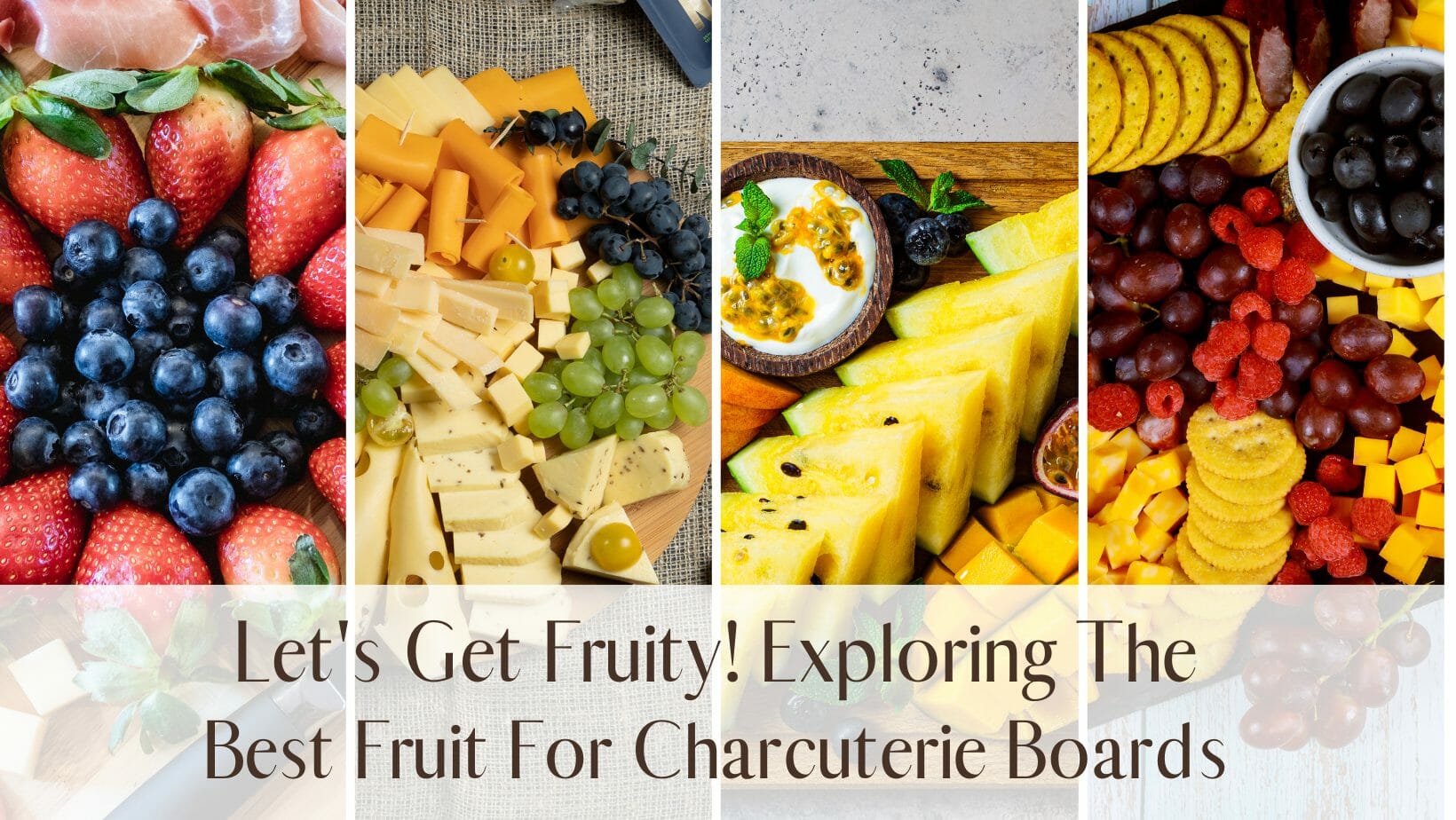Welcome to the vibrant world of charcuterie boards, where an artful arrangement of savory meats, delectable cheeses, and an assortment of luscious fruits awaits. Fruits play a crucial role in elevating the flavors, textures, and visual appeal of a charcuterie board. As well as offering a burst of freshness and a delightful contrast to the savory components. In this guide, we embark on a tantalizing journey to discover the perfect fruits for your charcuterie board, exploring a variety of options that harmonize beautifully with the other ingredients.
So, let's dive into this fruity adventure, where we celebrate the beauty of nature's bounty and unlock the hidden potential of fruits for your charcuterie board. Get ready to impress your guests, awaken your taste buds, and create a visual feast that is as delightful to look at as it is to savor. It's time to unlock the vibrant world of fruits for charcuterie boards and take your culinary escapades to new heights.
TIP: Unlock the art of charcuterie quickly and join over 514K enthusiasts! Click here to elevate your food art game now >>
Table of Contents [CLICK HERE TO OPEN]
- The Perfect Fruits for Charcuterie Boards: Enhancing Color and Taste
- Common Fruits to Delight Every Palate
- Seasonal Fruits: Embracing Nature's Bounty
- Exotic Fruits: Unleashing a Tropical Twist
- Beyond Fresh: Dried Fruits and Their Delectable Appeal
- Pairing Perfection: Fruits and Complementary Ingredients
- Cheese and Fruit: A Match Made in Culinary Heaven
- Chocolate and Fruit: A Decadent Combination
- Nuts and Fruit: Crunch and Sweetness Combined
- Garnishing Your Board: Adding the Finishing Touches
- Wrapping It Up
- Frequently Asked Questions
The Perfect Fruits for Charcuterie Boards: Enhancing Color and Taste
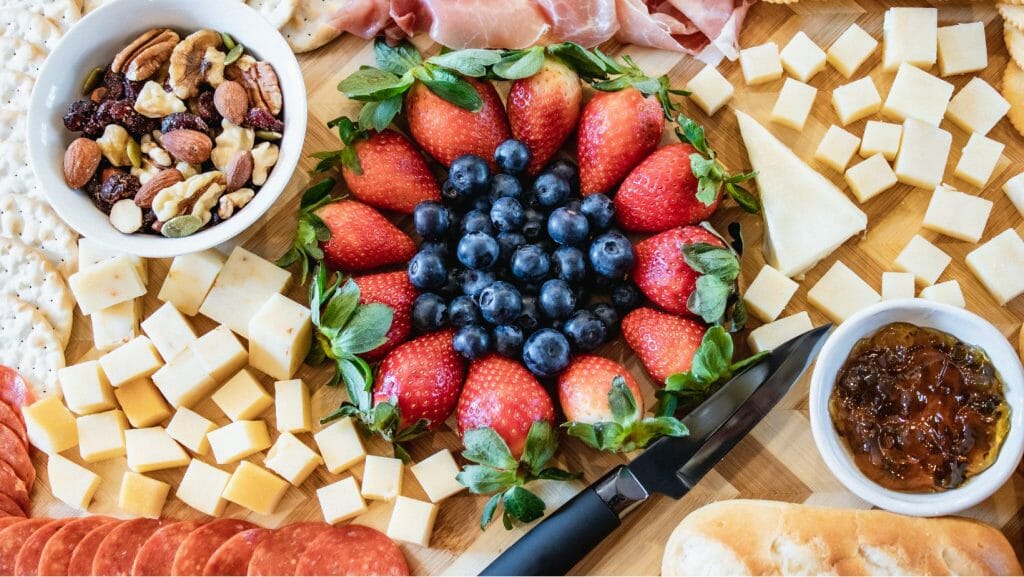
Common Fruits to Delight Every Palate
When it comes to creating a charcuterie board that pleases both the eyes and the taste buds, incorporating common fruits is a surefire way to add vibrancy, juicy flavors, and versatility. Apples, grapes, berries, oranges, and pineapple are the go-to choices that never disappoint.
Imagine the crisp bite of a juicy apple, the burst of sweetness from a plump grape. Or the tantalizing mix of flavors from an assortment of berries. These fruits bring a pop of color and a refreshing balance to the savory components of the charcuterie board. Their versatility allows them to pair well with various types of meats and cheeses. Thus making them essential building blocks for a well-rounded spread.
Fresh And Ripe
To ensure the ultimate taste and visual appeal, it's crucial to select the freshest and ripest fruits. When picking apples, look for firm ones with smooth skin and a pleasant aroma. For grapes, choose clusters with evenly colored and plump berries that are firmly attached to the stem. When it comes to berries, opt for those that are brightly colored, plump, and free of any signs of spoilage. Oranges should feel heavy for their size, indicating juiciness, and have a vibrant hue. When selecting a pineapple, go for one with a sweet aroma and a slightly yielding skin.
By carefully curating the freshest and ripest fruits, you ensure a burst of flavor and an appealing visual display that captivates guests. These common fruits form the foundation of your charcuterie board. Thus offering a delightful medley of tastes and colors that make each bite a memorable experience.
So, whether you're indulging in the crispness of apples, the juicy sweetness of grapes, the burst of flavor from berries, the refreshing citrus of oranges, or the tropical touch of pineapple, these common fruits are your trusted companions on the journey to creating a stunning charcuterie board.
Remember, the key lies not only in the selection of fruits but also in their presentation. Arrange them strategically, considering color contrasts, shapes, and sizes, to create an enticing visual feast. Combine slices, clusters, and whole fruits to add depth and variety to your board. With a thoughtful selection and presentation, these common fruits will transform your charcuterie board into an edible work of art that delights and satisfies every palate.
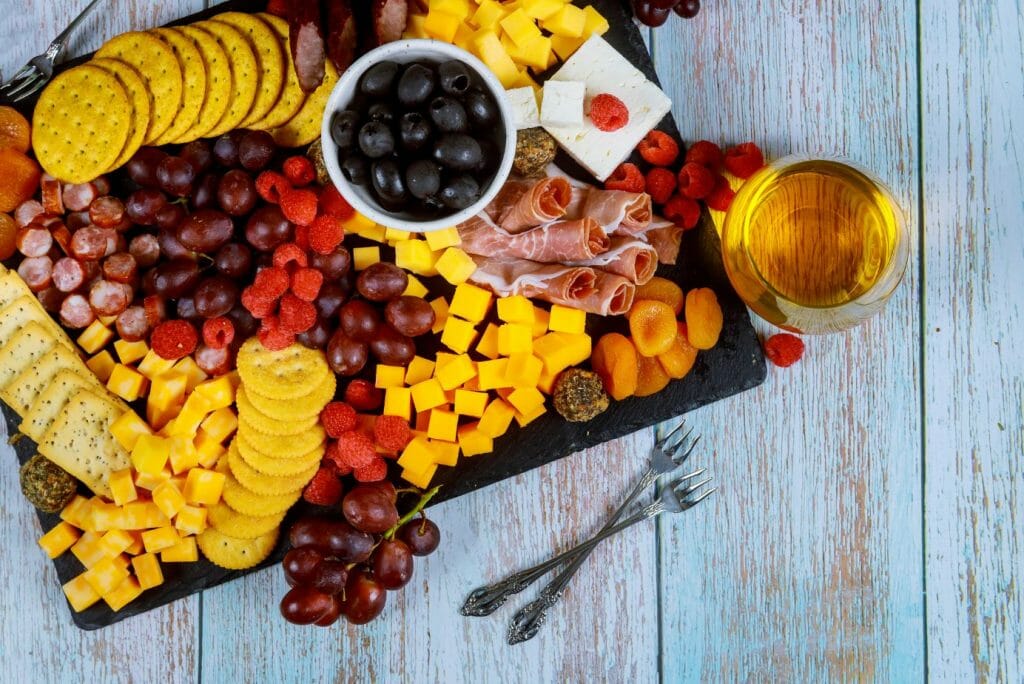
Seasonal Fruits: Embracing Nature's Bounty
As you embark on your charcuterie board journey, don't overlook the incredible joys that seasonal fruits can bring to your spread. By embracing nature's bounty, you unlock a world of unique flavors, textures, and vibrant colors that elevate your charcuterie experience to new heights.
Watermelon, citrus fruits, cherries, figs, pomegranate, and persimmons are just a few examples of seasonal fruits that harmonize beautifully with charcuterie boards. Picture the refreshing sweetness of juicy watermelon paired with salty prosciutto. Or the zesty burst of citrus segments balancing the richness of cured meats and cheeses. Each bite becomes an exquisite balance of flavors that leaves a lasting impression on your taste buds.
Seasonal fruits not only contribute to the taste profile but also add visual appeal to your charcuterie board. The deep red hues of cherries, the vibrant orange of citrus slices, or the jewel-like arils of pomegranate seeds create a stunning tapestry of colors that make your spread irresistibly enticing. They bring a touch of nature's artistry to your table.
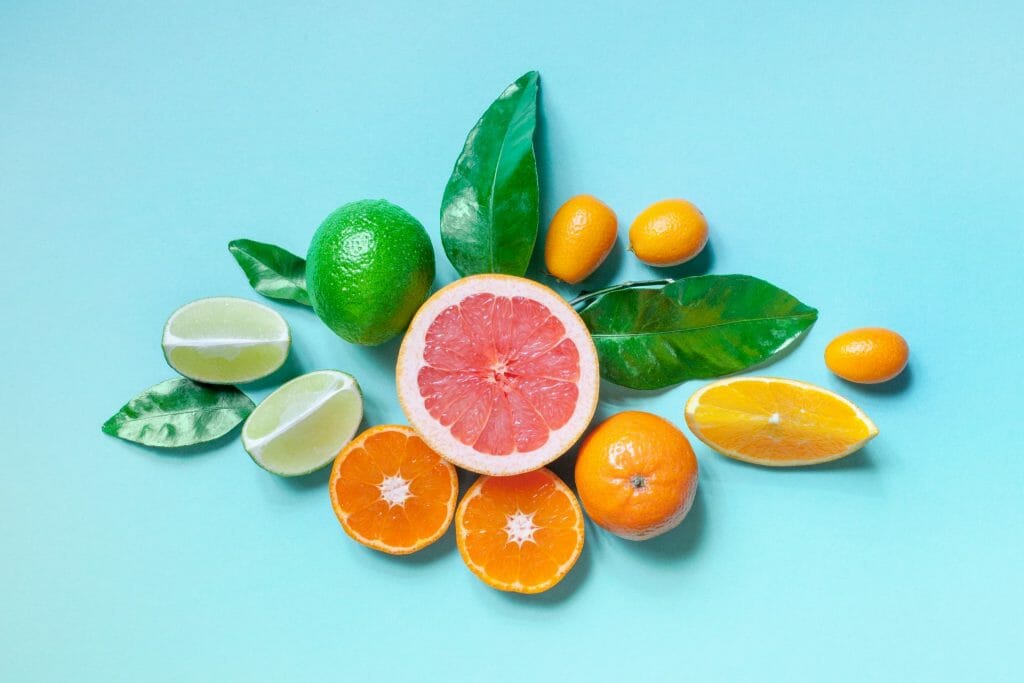
Key Benefits Of Seasonal Fruit
One of the key benefits of incorporating seasonal fruits is capturing their peak freshness. By choosing fruits that are in season, you ensure that they are at their prime, bursting with flavor and nutrients. These fruits are often sourced locally, supporting your community's farmers and promoting sustainability. By celebrating the abundance of each season, you create a connection to the land and a deeper appreciation for the ingredients on your charcuterie board.
Furthermore, the availability of seasonal fruits adds an element of excitement and anticipation to your culinary creations. As the seasons change, so do the fruits that grace your board. It's an ever-evolving journey that allows you to explore and experiment with a wide array of flavors and combinations.
So, as you plan your charcuterie board, pay attention to the seasonal fruits that nature offers. Seek out the succulent watermelons of summer, the tangy citrus fruits of winter, the luscious cherries of spring, the velvety figs of autumn. And the jewel-like pomegranates and persimmons that grace your table during their designated times. Embrace the harmony between the changing seasons and the bounty they provide. And let your charcuterie board reflect the ebb and flow of nature.
Exotic Fruits: Unleashing a Tropical Twist
Prepare to embark on a journey that will transport your taste buds to distant lands, adding a delightful element of surprise and exoticism to your charcuterie board. It's time to unleash the vibrant colors and refreshing flavors of exotic fruits that infuse your spread with a tropical twist.
Dragon fruit, passion fruit, star fruit, lychee, mango, and papaya are just a few examples of the exotic fruits that can take your charcuterie board to new heights. Imagine the vibrant pink flesh of a dragon fruit, speckled with black seeds. Or the tangy explosion of flavor that comes from scooping out the juicy pulp of a passion fruit. These fruits not only captivate the eyes but also tantalize the taste buds with their unique profiles.
Adding exotic fruits to your charcuterie board not only enhances the visual appeal but also introduces a refreshing balance of flavors. The tropical sweetness of mango slices perfectly complements the savory notes of cured meats. While the crisp and tangy star fruit brings a burst of citrus-like freshness. Each bite becomes a mini vacation for your palate, exploring the diverse taste sensations that the world of exotic fruits has to offer.

Captivating Textures
These fruits also contribute to the overall experience by creating a captivating blend of textures. From the smooth and creamy flesh of a ripe mango to the juicy and slightly crunchy texture of dragon fruit, each bite introduces a new dimension to your charcuterie board. The interplay of textures adds an element of excitement and keeps your taste buds engaged.
Incorporating exotic fruits into your charcuterie board allows you to experiment with different combinations and flavors, creating a culinary adventure that leaves a lasting impression on your guests. You can slice the dragon fruit into striking geometric shapes, garnish your spread with the vibrant yellow star fruit slices. Or layer the sweet and aromatic lychee alongside the assortment of meats and cheeses. The possibilities are as endless as your imagination.
As you curate your charcuterie board, consider the vibrant colors, refreshing flavors, and textural diversity that exotic fruits bring to the table. They add a touch of the extraordinary and create an experience that goes beyond the ordinary. Combine them with the common and seasonal fruits we discussed earlier to create a symphony of flavors.
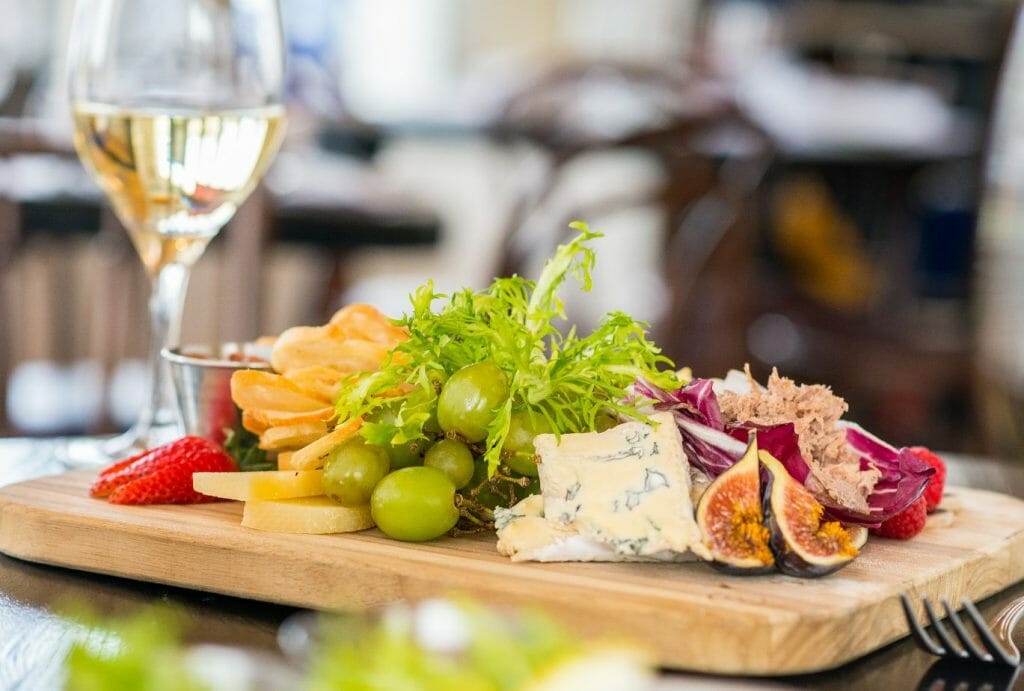
Beyond Fresh: Dried Fruits and Their Delectable Appeal
While fresh fruits steal the spotlight on charcuterie boards, let's not forget about their equally enticing and versatile counterparts: dried fruits. Dried apricots, figs, cranberries, cherries, and mango are among the dried fruits that bring a delightful twist to your charcuterie spread. These concentrated flavor bombs and chewy textures are sure to elevate your taste experience.
Dried fruits undergo a process where the majority of their water content is removed, intensifying their natural flavors. This transforms them into bite-sized bursts of sweetness. When you bite into a dried apricot, the flavors become more concentrated, allowing the natural sugars to shine through. The result is a delightful combination of tanginess and sweetness that pairs beautifully with a variety of meats, cheeses, and nuts.
In addition to their intensified flavors, dried fruits offer a satisfyingly chewy texture. The slight resistance as you bite into a dried fig or cranberry adds a pleasant contrast to the other elements on your charcuterie board. The chewiness of dried fruits also contributes to their shelf stability. This makes them an excellent choice for longer-lasting and portable charcuterie setups.
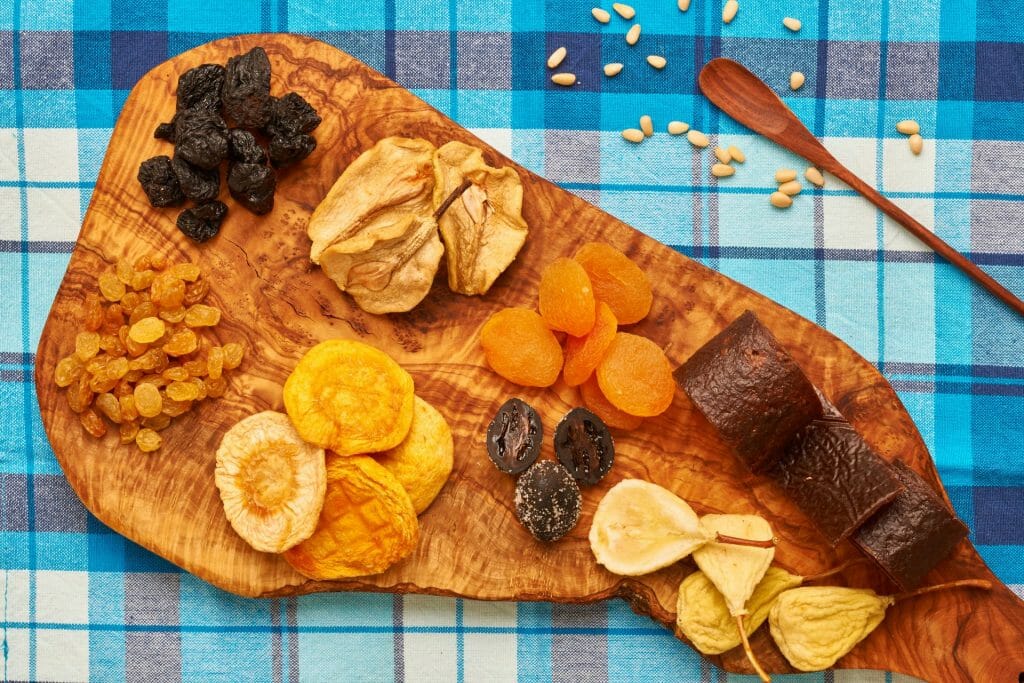
Perfect Pairing
Pairing dried fruits with different types of meats, cheeses, and nuts opens up a world of flavor possibilities. The sweetness of dried cherries can beautifully balance the saltiness of prosciutto. While the chewy texture of dried mango complements the creaminess of brie cheese. Consider adding dried apricots to your charcuterie board alongside pistachios for a delightful blend of flavors and textures.
By incorporating dried fruits into your charcuterie board, you introduce a new layer of complexity and depth to the overall taste experience. They offer a convenient and versatile option, particularly when fresh fruits may not be readily available or suitable for the occasion. Whether you're aiming for a more rustic, earthy vibe or seeking to balance out the flavors with a touch of sweetness, dried fruits are a wonderful addition to your charcuterie repertoire.
Pairing Perfection: Fruits and Complementary Ingredients
Cheese and Fruit: A Match Made in Culinary Heaven
When it comes to creating a truly remarkable charcuterie board, the harmonious marriage of cheese and fruit is a match made in culinary heaven. The combination of creamy, savory cheeses with the natural sweetness and acidity of fruits creates a symphony of flavors that tantalize the taste buds.
The art of pairing cheese with fruit lies in finding the right balance and complementary elements. The goal is to enhance the flavors of both components, creating a delightful interplay of tastes and textures. Here are some recommendations for classic pairings as well as unique combinations to inspire your creativity:
Soft Cheeses
Pair creamy brie with slices of fresh pear or figs for a luscious and elegant pairing.
Spread some goat cheese on a cracker and top it with a dollop of tangy raspberry or blackberry jam for a burst of sweet and tart flavors.
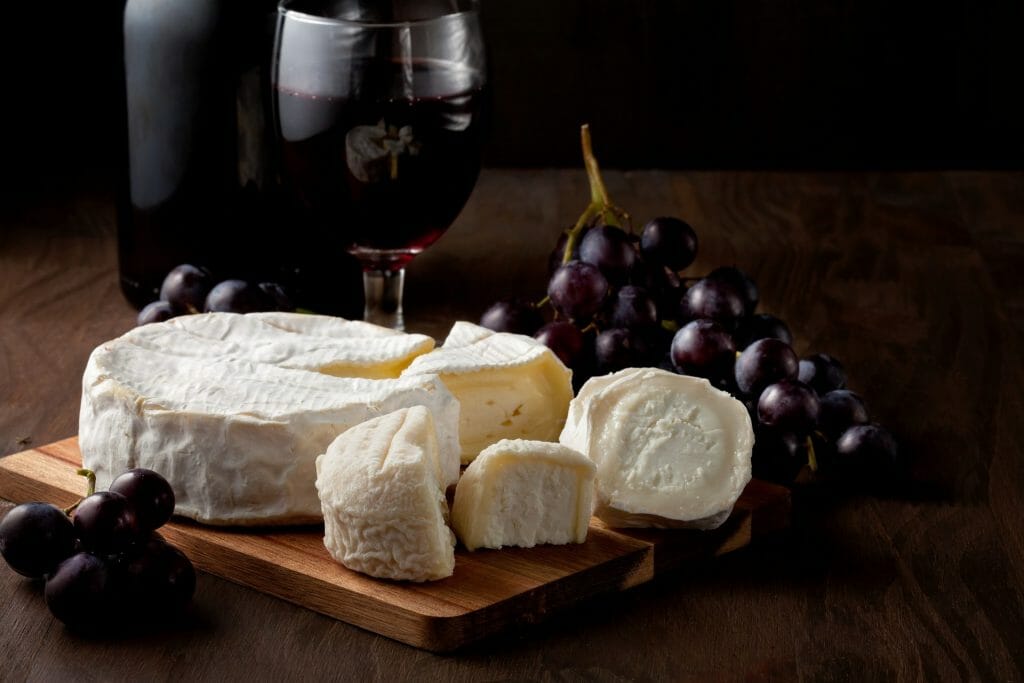
Hard Cheeses
Enjoy the nutty and slightly salty flavors of aged cheddar with crisp apple slices or juicy grapes.
Combine the sharpness of Parmesan with slices of ripe melon, such as cantaloupe or honeydew, for a refreshing and savory combination.

Blue Cheeses
The bold and pungent flavors of blue cheeses like Roquefort or Gorgonzola are beautifully complemented by the sweetness of dried figs or fresh sliced pears.
For an unexpected twist, pair blue cheese with slices of grilled peaches. This adds a subtle smokiness and caramelized sweetness to the mix.

Don't be afraid to experiment with different cheese and fruit pairings to discover your own signature combinations. The key is to balance the flavors, textures, and intensities of the ingredients. Consider the characteristics of both the cheese and fruit. Be it creamy or crumbly, mild or strong, sweet or tangy—and aim for a harmonious union that enhances the overall experience.
Remember, the fruit you choose should not only complement the cheese but also add visual appeal to your charcuterie board. Consider incorporating a variety of colors, shapes, and sizes to create an eye-catching display that is as visually enticing as it is delicious.
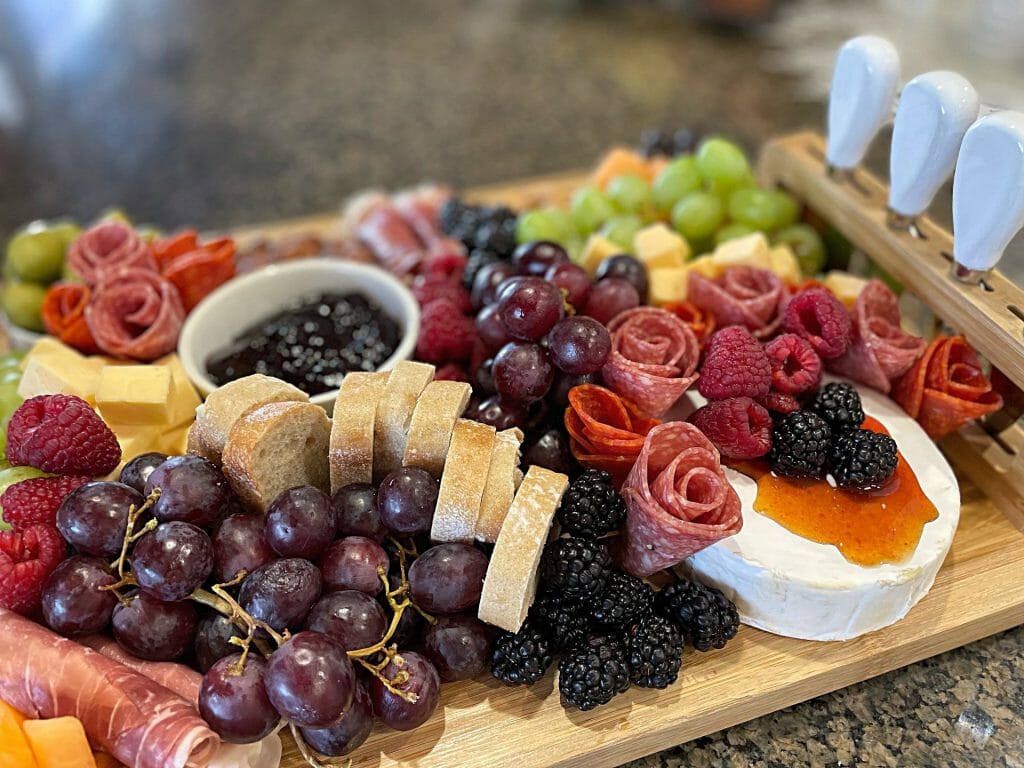
Chocolate and Fruit: A Decadent Combination
Indulge your senses in a world of decadence as we explore the delightful combination of fruits and chocolate on your charcuterie board. The marriage of rich, velvety chocolate with the natural sweetness and juiciness of fruits is a match made in dessert heaven.
The beauty of pairing fruits with chocolate lies not only in the delicious taste but also in the visual appeal it brings to your charcuterie board. The vibrant colors of the fruits complement the deep, luscious shades of chocolate, creating an enticing display that is as pleasing to the eyes as it is to the palate.
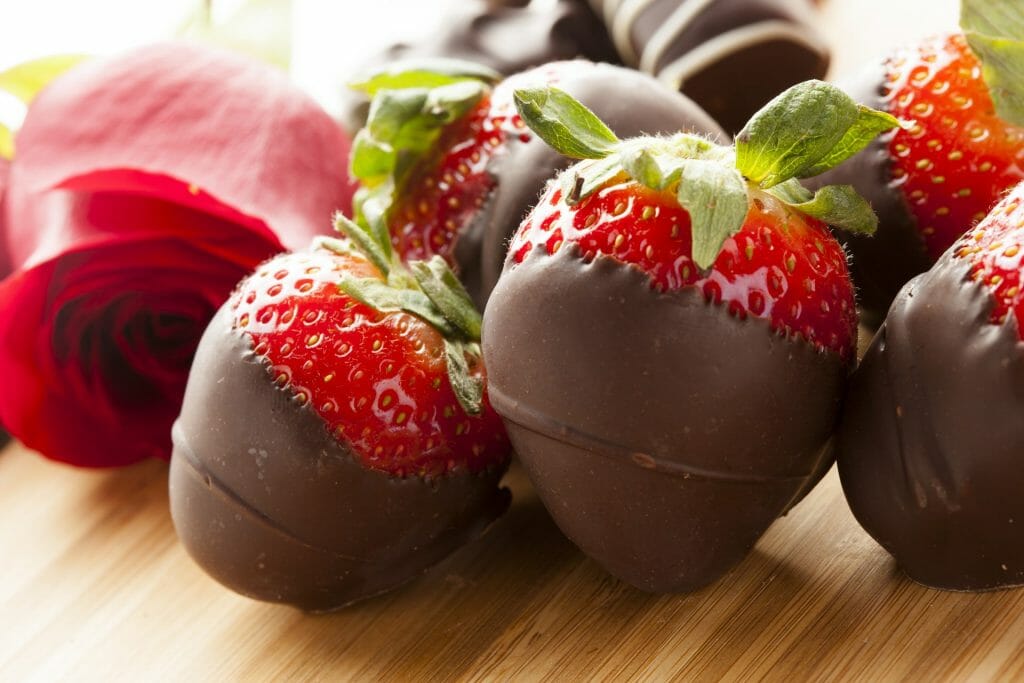
Here are some popular fruits that harmonize wonderfully with various types of chocolate:
Strawberries
Dip plump, juicy strawberries into melted dark chocolate for a classic and irresistible combination.
For an extra touch of elegance, drizzle white chocolate over the chocolate-dipped strawberries. Also sprinkle some crushed pistachios for added crunch.
Bananas
Slice ripe bananas and dip them into melted milk or dark chocolate for a creamy and comforting treat.
Create a delightful contrast by rolling the chocolate-dipped banana slices in crushed peanuts or shredded coconut.
Oranges
Segment juicy oranges and dip each piece halfway into melted dark chocolate for a burst of citrusy and chocolatey goodness.
Sprinkle a pinch of sea salt on top to elevate the flavor profile and add a touch of sophistication.
Pineapple
Grill pineapple slices until caramelized and drizzle them with melted milk chocolate for a tropical delight.
To add a hint of heat, sprinkle some chili powder or cayenne pepper over the chocolate-dipped pineapple slices.
The possibilities are endless when it comes to pairing fruits and chocolate. You can also incorporate dried fruits like apricots, cherries, or figs, which bring a chewy texture and concentrated sweetness to the mix. Additionally, consider using chocolate-covered nuts or dried fruits as an alternative way to incorporate the irresistible combination of chocolate and fruits.
When serving these delightful treats on your charcuterie board, you can arrange them on a separate section or place them strategically alongside the cheese and other components. This creates a visual and gastronomic experience, allowing your guests to explore the different flavor combinations and indulge in the sweet and fruity decadence.
Nuts and Fruit: Crunch and Sweetness Combined
Get ready to experience the ultimate harmony of textures and flavors as we delve into the magical world of combining nuts and fruits on your charcuterie board. The interplay of crunchy nuts and luscious fruits creates a symphony of sensations that will leave your taste buds singing with delight.
When it comes to pairing nuts and fruits, it's all about creating a well-rounded taste experience. The contrast of textures and the marriage of sweet and savory flavors elevate the overall enjoyment of your charcuterie spread. Here are some suggestions to help you create unforgettable combinations:
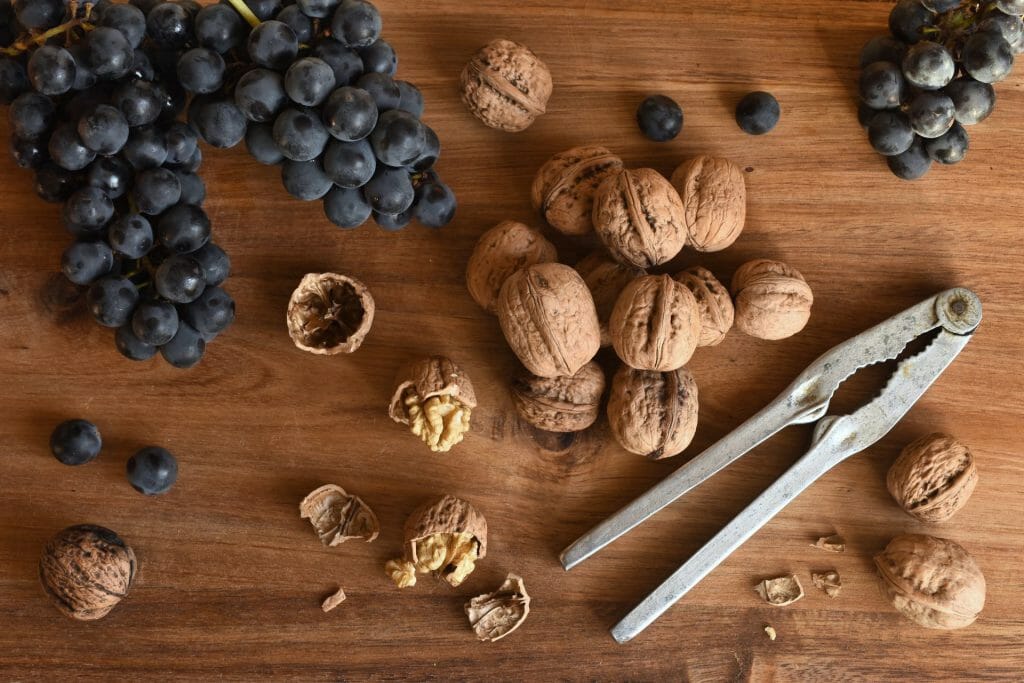
Almonds
Almonds, with their delicate crunch, pair beautifully with fruits like apples, pears, and figs.
Picture this: crisp slices of apple topped with creamy almond butter and a sprinkle of sea salt. It's a match made in heaven.
Walnuts
Walnuts offer a rich, earthy flavor that complements fruits such as grapes, strawberries, and blueberries.
Try this delightful pairing: juicy grapes wrapped in prosciutto and topped with a walnut half. It's a burst of sweet, salty, and nutty goodness.
Pistachios
Pistachios bring a vibrant green hue and a slightly sweet taste that pairs well with cherries, peaches, and apricots.
Imagine a succulent peach slice adorned with a sprinkle of crushed pistachios. It's a treat for both the eyes and the palate.
Cashews
Cashews, with their creamy texture and buttery flavor, work wonders with tropical fruits like mangoes, pineapples, and papayas.
Indulge in a tropical paradise with chunks of fresh pineapple accompanied by buttery cashews. It's like a mini vacation for your taste buds.
The key to successful nut and fruit pairings lies in finding a balance of flavors and textures. Consider the sweetness, acidity, and juiciness of the fruit, and choose nuts that complement these attributes. Don't be afraid to experiment and discover your own unique combinations that suit your taste preferences.
Garnishing Your Board: Adding the Finishing Touches
Mint Leaves and Basil: Freshness and Fragrance
When it comes to adding the final touches to your charcuterie board, don't forget the power of fresh herbs like mint leaves and basil. These fragrant greens bring a burst of freshness and a delightful aroma that elevates the overall experience of your culinary masterpiece.
Mint leaves, with their bright green color and refreshing flavor, are a versatile garnish that pairs exceptionally well with fruits such as berries, melons, and citrus. Their cool and invigorating taste provides a pleasant contrast to the richness of the charcuterie items. Consider placing a small bunch of mint leaves near a bowl of juicy strawberries or scattering them over a platter of watermelon slices for a pop of color and a hint of herbal goodness.
Basil, known for its distinctive aroma and sweet, slightly peppery taste, adds a touch of sophistication to your charcuterie board. It complements fruits like tomatoes, peaches, and even figs. Imagine the combination of ripe tomatoes, fresh mozzarella, and a few basil leaves drizzled with balsamic glaze. It's a classic flavor combination that brings out the best in both the fruits and the charcuterie elements.
Not only do mint leaves and basil enhance the visual appeal of your charcuterie board, but they also stimulate the senses, awakening the palate and preparing it for the delightful flavors to come. These herbs serve as a reminder that even the smallest details can make a significant impact on the overall dining experience.
So, as you arrange your charcuterie board, don't forget to garnish it with a sprinkle of mint leaves or a few basil leaves strategically placed to enhance the flavors and tantalize the senses. These simple additions will take your charcuterie experience to a whole new level, leaving your guests impressed and eager to savor every delightful bite.

Edible Flowers: Elevating Visual Appeal
When it comes to creating a charcuterie board that is not only delicious but visually stunning, one element you shouldn't overlook is the addition of edible flowers. These delicate blossoms bring a touch of beauty, elegance, and a whimsical charm to your spread, making it a feast for both the taste buds and the eyes.
Edible flowers offer a wide array of colors, shapes, and flavors, allowing you to create a truly unique and visually captivating presentation. From vibrant pansies to aromatic lavender, the options are endless, and each flower adds its own special touch to the charcuterie board.
As you embark on your journey of garnishing with edible flowers, it's essential to ensure that the flowers you choose are safe for consumption. Not all flowers are edible, and some may even be toxic, so it's crucial to do your research or purchase them from a trusted source. Popular edible flowers that work beautifully on charcuterie boards include nasturtiums, violets, marigolds, and rose petals.
Nasturtiums, with their fiery orange and yellow hues, lend a peppery kick to the palate, while violets bring a delicate and subtly sweet flavor. Marigolds, available in vibrant shades of orange and yellow, offer a slightly spicy and citrusy taste. And who can resist the romantic allure of rose petals, which provide a fragrant and floral note to your charcuterie board?
Creating A Centerpiece
The presence of edible flowers not only adds a decorative touch but also showcases your attention to detail and culinary creativity. They create a feast for the eyes, making your charcuterie board a centerpiece that sparks conversation and admiration among your guests.
So, as you assemble your charcuterie board, consider sprinkling some edible flowers strategically over the fruits, cheeses, and charcuterie selections. The vibrant colors and delicate flavors of these flowers will not only enhance the visual appeal of your spread but also provide an unexpected and delightful culinary experience. Just remember to choose flowers that are safe for consumption, and let your creativity bloom as you create a charcuterie board that is a feast for all the senses.
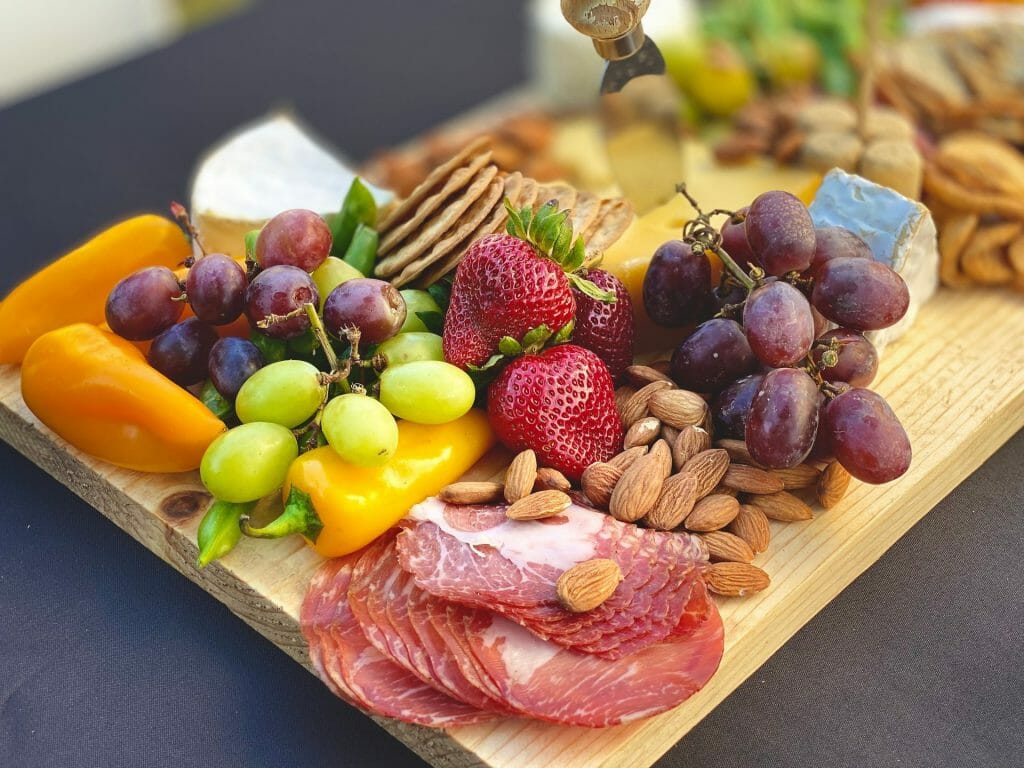
Wrapping It Up
Throughout this article, we've explored the art of creating a captivating and delicious charcuterie board by carefully selecting the perfect fruits.
In conclusion, choosing the right fruits for your charcuterie board is essential. They bring a burst of freshness, vibrant colors, and a delightful medley of flavors to every bite. The possibilities are endless, and I encourage you to unleash your creativity by experimenting with different fruits, pairings, and presentation ideas. Let your charcuterie board be a reflection of your unique taste and style, a masterpiece that not only pleases the palate but also captivates the eyes.
So, gather your favorite fruits, cheeses, meats, nuts, and garnishes, and embark on a journey of culinary artistry. Create a charcuterie board that becomes a centerpiece of any gathering, sparking conversations, and leaving a lasting impression on your guests. Remember, the key ingredients are passion, creativity, and a love for the art of food. Enjoy the process, and savor the delicious moments shared around your magnificent charcuterie board.

Frequently Asked Questions
What fruit is good on a charcuterie board?
The best fruits for a charcuterie board include apples, grapes, berries (such as strawberries, raspberries, and blueberries), oranges, and pineapple. These fruits offer a combination of vibrant colors, juicy flavors, and versatility that complement the various meats, cheeses, and other accompaniments on the board. Additionally, seasonal fruits like watermelon, citrus fruits, cherries, figs, pomegranate, and persimmons can add a touch of freshness and uniqueness to your charcuterie spread. Experiment with different fruit combinations to create a visually appealing and delicious charcuterie board experience.
Does a charcuterie board need fruit?
Including fruit on a charcuterie board is not a requirement, but it can greatly enhance the overall flavor, visual appeal, and balance of the spread. Fruit adds a refreshing and sweet element that complements the savory meats and cheeses. It provides a contrast in taste and texture, creating a well-rounded and satisfying experience. However, the decision to include fruit ultimately depends on personal preference and the desired aesthetic and taste profile of the charcuterie board. Consider incorporating a variety of fruits to add color, vibrancy, and a touch of natural sweetness to your charcuterie presentation.
How do you cut fruit for charcuterie?
To cut fruit for a charcuterie board, follow these steps:
- Wash and dry the fruit to ensure cleanliness.
- Choose the desired size and shape for your fruit pieces, such as slices, wedges, or cubes.
- Remove any peels or rinds, if desired, based on the type of fruit.
- Slice larger fruits like apples or melons into thin, uniform pieces.
- For smaller fruits like berries or grapes, you can leave them whole or slice them in half for easier serving.
- Arrange the cut fruit neatly on your charcuterie board, considering color and spacing for an appealing presentation.
Remember to consider the overall aesthetics of your charcuterie board and the ease of serving when cutting the fruits. Use sharp knives and exercise caution while handling the fruits to ensure safety.
How much fruit per person on a charcuterie board?
The amount of fruit per person on a charcuterie board can vary depending on the size of the board, the number of other ingredients, and individual preferences. As a general guideline, you can allocate around 1-2 ounces (28-56 grams) of fruit per person. Consider offering a variety of fruits and adjusting the quantity based on the overall composition of your board. It's always a good idea to have a slightly larger quantity of fruit to ensure that everyone can enjoy a generous portion.
How do you keep fruit from turning brown on a charcuterie board?
To prevent fruit from turning brown on a charcuterie board, you can use these methods:
- Lemon Juice: Sprinkle or brush lemon juice on the exposed surfaces of cut fruits. The acidity of lemon juice helps inhibit browning.
- Citric Acid Solution: Create a solution of water and citric acid (available in powdered form) and dip the fruits in it before placing them on the board.
- Honey or Simple Syrup: Toss the cut fruits in a mixture of honey or simple syrup, which acts as a protective coating.
- Immediate Assembly: Cut and prepare the fruits just before serving to minimize the exposure to air and delay browning.
- Keep Chilled: If possible, keep the charcuterie board refrigerated until serving to slow down the oxidation process.
Remember to use these methods sparingly and consider the impact on taste and texture. It's also a good practice to provide small serving utensils to prevent cross-contamination between fruits and other ingredients.
Share Your Creations:
We’d love to see the charcuterie boards you create using our guide! Feel free to share your own creations in the comments or on social media, and tag us for a chance to be featured. And if you have any other ideas or tips for creating the perfect charcuterie board, we’d love to hear them.

